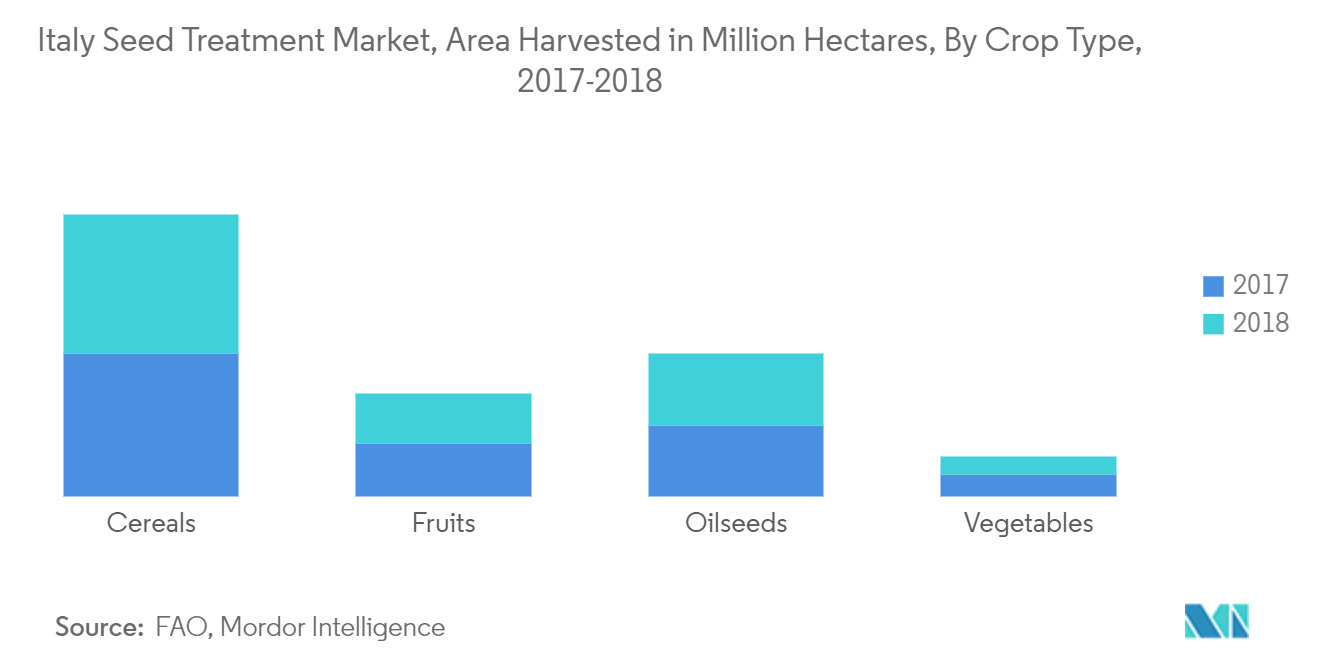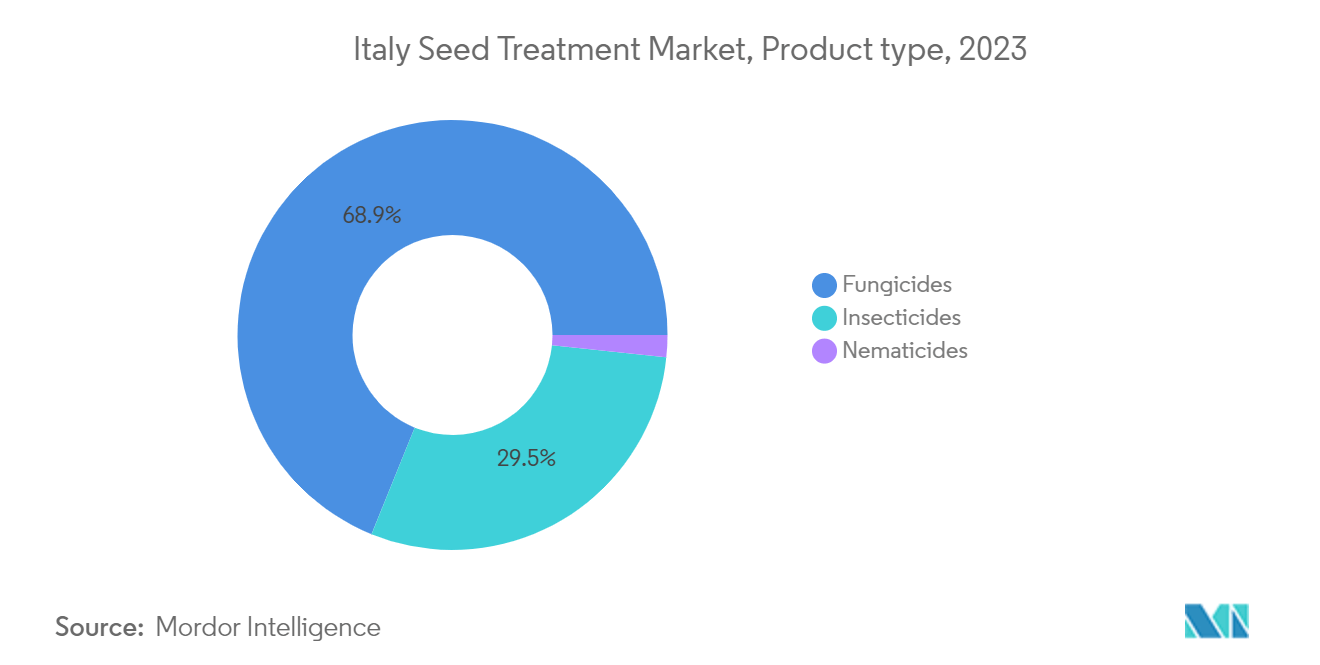Market Trends of Italy Seed Treatment Industry
Decreasing Arable Land
The growing population and rising demand for food have accelerated the practice of seed treatment to increase productivity. The demand for treated seeds is high in Italy, as cereal crops, like maize and barley, and fruits and vegetables, like grapes and sugar beet, are cultivated on a large scale in the country. According to the Food and Agriculture Organization, the area cultivated under various crops is declining Y-o-Y. To meet the increasing demand, farmers had to implement seed treatment methodology to sustain a considerable return on investment.
The regulatory uncertainty of the product approvals, doubts regarding their efficacy, and environmental concerns arising from the usage of chemical products have hampered the growth of these products across the world. Organic farming methods and GM crops are seen as a threat to the seed treatment market. Also, the increasing demand for biological treatment is seen as a threat to chemical seed treatment.

The Fungicides Segment is Dominating the Market
Among the various types of crop protection chemicals, fungicides were the most consumed in the Italian seed treatment market in 2023, representing 68.9% of the market share. Italy is the largest soybean producer in Europe, with an area of approximately 286,000 hectares in 2022. It also accounted for around 30% of the total soybean planted area in Europe. A major limiting factor to soybean production is anthracnose, which arises from various types of the hemibryologic fungus, Colletotrichum. Insufficient attention had been paid to losses caused by anthracnose, which had a detrimental effect on up to 50% of grain production. Therefore, fungicides are utilized to combat fungal disease and protect the crop from damage.


